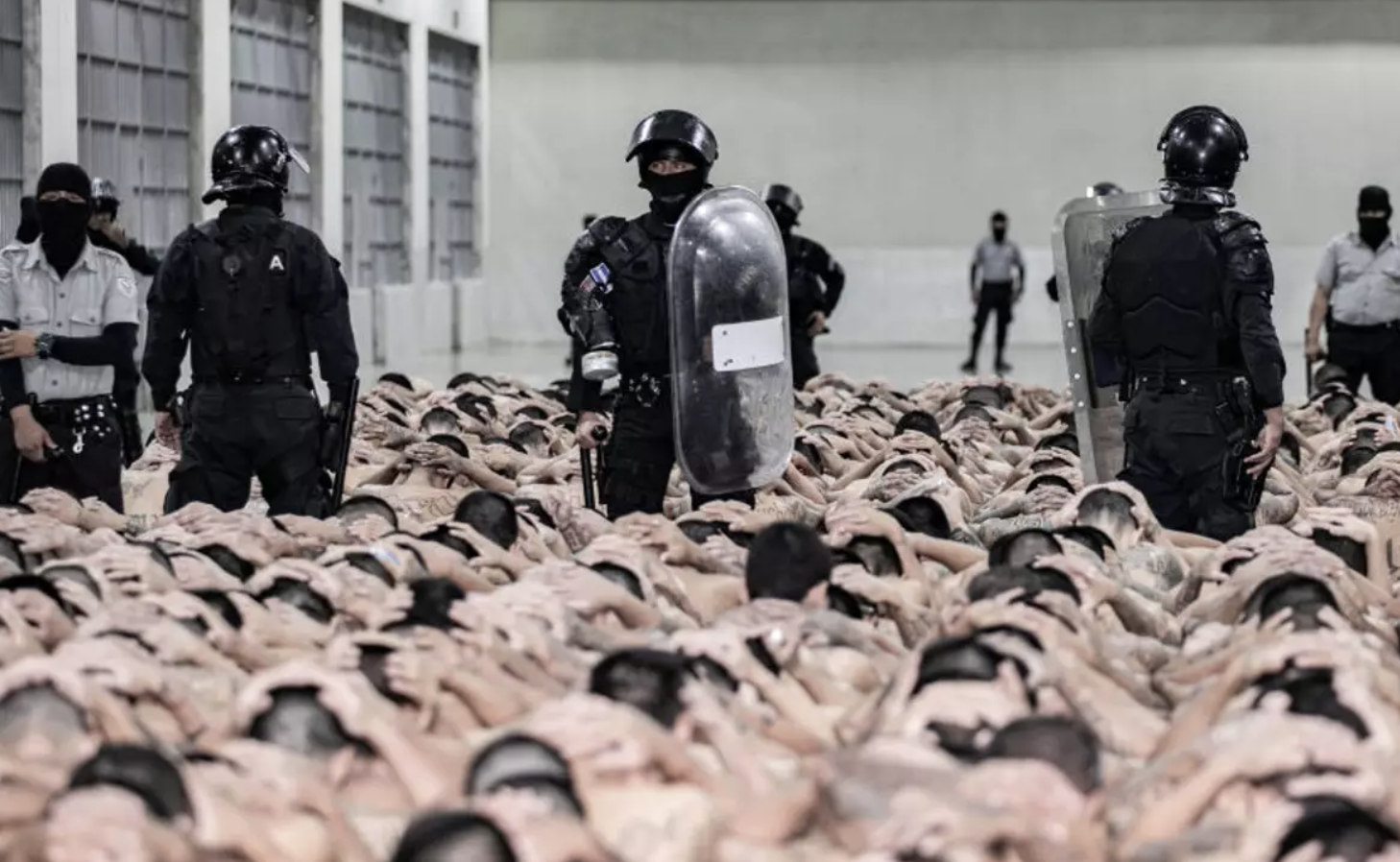Exploring the Harshest Prison Conditions: The Policies That May Soon Affect U.S. Citizens Under Trump’s Detention
In recent years, two prisons have come to the forefront due to their extreme conditions and controversial management practices, highlighting significant flaws in the systems. On one side, there’s El Salvador’s Centro de Confinamiento del Terrorismo (CECOT), which has earned the title of “the world’s worst prison” due to its harsh and inhumane conditions. Meanwhile, in the United States, the William C. Holman Correctional Facility in Atmore, Alabama, known for its overcrowding and under-resourced operations, also continues to garner negative attention. This report explores these two prisons, delving into the conditions, policies, and controversies surrounding them.
El Salvador’s Centro de Confinamiento del Terrorismo (CECOT)
The CECOT, which opened in 2023, was built as part of President Nayib Bukele’s aggressive stance against El Salvador’s gang violence. Located in Tecoluca, the facility is designed to hold 40,000 inmates, making it one of the largest and most secure prisons in the world. The prison was intended to house El Salvador’s most dangerous criminals, especially notorious gang members involved in violent crimes.
Despite the extensive security measures—including 19 watchtowers, two concrete walls, and electrified fences—the conditions within CECOT have drawn widespread condemnation. Human rights groups have decried the inhumane treatment of prisoners, pointing to overcrowding, poor sanitation, and inadequate ventilation as key concerns. The United Nations Subcommittee for the Prevention of Torture referred to the prison as a “concrete and steel pit,” emphasizing the cruelty of the conditions endured by the inmates.
Reports from journalists and observers who have visited CECOT describe oppressive heat, with temperatures often reaching 35°C (95°F). Inmates live in cramped cells, sleeping on metal bunks without mattresses, and are fed simple meals like rice, beans, and hard-boiled eggs. Even basic interactions with inmates are discouraged for fear of violence, and items, however small, can be turned into weapons.
The existence of CECOT has sparked political debates, especially after U.S. Secretary of State Marco Rubio revealed that President Bukele had proposed a controversial deal. This deal would involve accepting U.S. deportees, including criminals, into the prison system, raising concerns over human rights violations. Critics argue that sending U.S. citizens to such a facility is unjust, while supporters suggest it may help ease overcrowding in U.S. prisons while enhancing security in El Salvador.
William C. Holman Correctional Facility in Atmore, Alabama
On the opposite end of the spectrum, the William C. Holman Correctional Facility in Atmore, Alabama, also faces severe criticism for its brutal conditions. Built in 1969, the facility was originally designed to house 581 inmates but now struggles to accommodate a far larger population. The result is chronic overcrowding, which has led to violent incidents, gang conflicts, and riots becoming commonplace.
Overcrowding is a persistent issue at Holman, with outdated infrastructure ill-equipped to handle the increased number of prisoners. This has resulted in cramped living conditions, with many inmates forced to share dormitory-style cells. Additionally, the prison’s lack of proper cooling systems exacerbates the already difficult conditions. Industrial fans are used to cool the building, but they provide little relief from the suffocating heat, leaving some areas of the prison nearly unbearable.
Staffing shortages compound the problems at Holman. In 2018, reports revealed that fewer than one-fifth of the required correctional officers were on duty, leading to a dangerous atmosphere. High staff turnover and a lack of personnel contribute to the pervasive violence within the facility. The understaffing has led to stabbings, riots, and hostage situations, which have become all too common.
Another deeply troubling aspect of Holman is its role as Alabama’s primary execution site. The prison houses many inmates on death row and has been criticized for its methods of execution. One recent execution of Kenneth Smith, carried out using nitrogen hypoxia, prompted outrage after reports described the inmate writhing and convulsing, raising concerns about the humanity and effectiveness of the procedure.
A Tale of Two Prisons
The extreme conditions in both El Salvador’s CECOT and Alabama’s Holman Correctional Facility highlight significant issues within the prison systems of both nations. CECOT is known for its harsh security measures and the brutal treatment of prisoners, while Holman is notorious for its overcrowding, understaffing, and increasing violence. While both facilities face different challenges, they reflect the same underlying problems: inadequate resources, overcrowded conditions, and a failure to provide humane treatment for prisoners.
These issues have sparked ongoing international debates about prison reform, human rights, and the treatment of incarcerated individuals. As both CECOT and Holman continue to attract global scrutiny, the need for comprehensive reform in prison systems around the world has never been more urgent.
